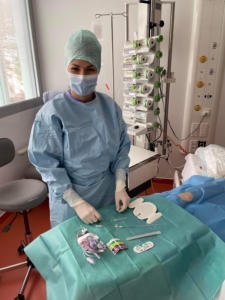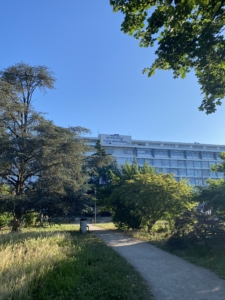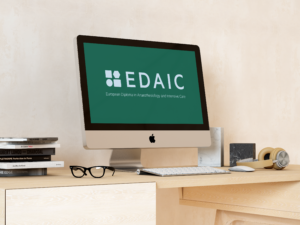Newsletter 2022
Newsletter October 2022: Training Exchange Programme Report
Being a trainee in anaesthesia and intensive care, you quickly realise that in this speciality, maybe more than others, there are as many ways of doing things as there are different colleagues doing them. This is one of the reasons why I decided to apply for the trainee exchange programme (TEP), hoping for the possibility to see and learn something different and broaden my experience. I was also specifically curious about France, not only because I’m half French and wanted to reconnect with my French roots; but also because of all the good things I’ve heard about French intensive care.

I arrived in Lyon at the beginning of April 2022 and was given a warm welcome by Dr Baptiste Balança, who was my supervisor. However, I was quickly well taken care of by all the members of the medical team at the ICU, who made me feel like a natural part of the team and treated me like one of their own interns. During my stay, I saw a wide range of patients with conditions such as severe traumatic brain injury (TBI), subarachnoid haemorrhage (SAH), other forms of severe stroke, status epilepticus, CNS infections and more. At the time I was there, the ICU had 15 ICU patient beds and 10 beds for patients in need of higher surveillance.
The day started at 8.00 with the on-call report, followed by coffee, where I soon realized I had to abandon my Swedish habits of having coffee with milk, and instead start drinking smaller but stronger cups. The days then enrolled with ward rounds, specific examinations, and trips back and forth to the radiology department. I was allowed to make many clinical decisions myself, but always with daily discussions with and teaching from the attending physicians. I participated in multidisciplinary team meetings and discussions, as well as sitting down and informing family members of the status of their ill beloved ones. I was involved in the multiparametric evaluation of these patients and was also allowed to perform procedures both non-specific and specific to the neuro-ICU, ranging from insertion of central venous and arterial catheters to intraparenchymal pressure monitor catheters. My knowledge in interpreting neurological radiology imaging also improved a lot.
It’s amazing how much I’ve learnt about neurophysiology, – pathology and -pharmacology during my exchange in Lyon. Not only was there a well-organised schedule of lectures for the interns held by the attending physicians, but I also received valuable hands-on teaching and time regarding transcranial Doppler ultrasound. This is a method not used in clinical practice at my hospital, but in Lyon, we used it daily to assess the cerebral blood flow velocities of SAH patients, monitoring the development of vasospasm in need of intervention. I’m glad to be able to take this new knowledge home with me because I’m sure that this is something that will interest my Swedish colleagues and could be replicated at our own neuro-ICU.
I was struck by both similarities and dissimilarities between the Swedish and French healthcare systems. Unfortunately, the shortage of nurses, especially after the Covid-19 pandemic, was something I recognised too well from home. However, the differences in our respective healthcare systems pose different challenges to our profession. In Lyon, my impression was that there was less of a shortage of ICU beds than in Sweden, but a bottleneck regarding organising adequate post-ICU care for patients, resulting in longer ICU stays than necessary. In Sweden, however, my experience is that the system functions well in regard to post-ICU patient management, but there is always a more prominent shortage of ICU beds. These are my personal reflections, and of course, this topic could be discussed in more detail than this short article allows.
Also, I take home with me the utmost respect for my many foreign colleagues who have moved to another country, learnt a new language, and still manage to do a great job, teaching and being professional role models for new doctors such as myself. Even if French is a language I manage well, it’s a completely different thing to manage it in a professional medical environment so characterised by the use of abbreviations and complicated information exchange. Although challenging to the language centre of my brain, I’m happy also to have been able to improve my medical French and hope to be able to go back to France professionally in the future.
Finally, I want to express my deepest gratitude to ESAIC and the TEP committee for giving me the opportunity to gain my most important work-life experience so far. I truly believe that experiences like this make us better doctors, and the TEP no doubt helps create bonds between anesthesiologists/intensivists throughout Europe. This is an experience I will never forget, and I highly recommend other junior doctors around Europe apply.
[maxbutton id=”1″ url=”https://www.esaic.org/newsletter/” text=”Read the Newsletter” ]












